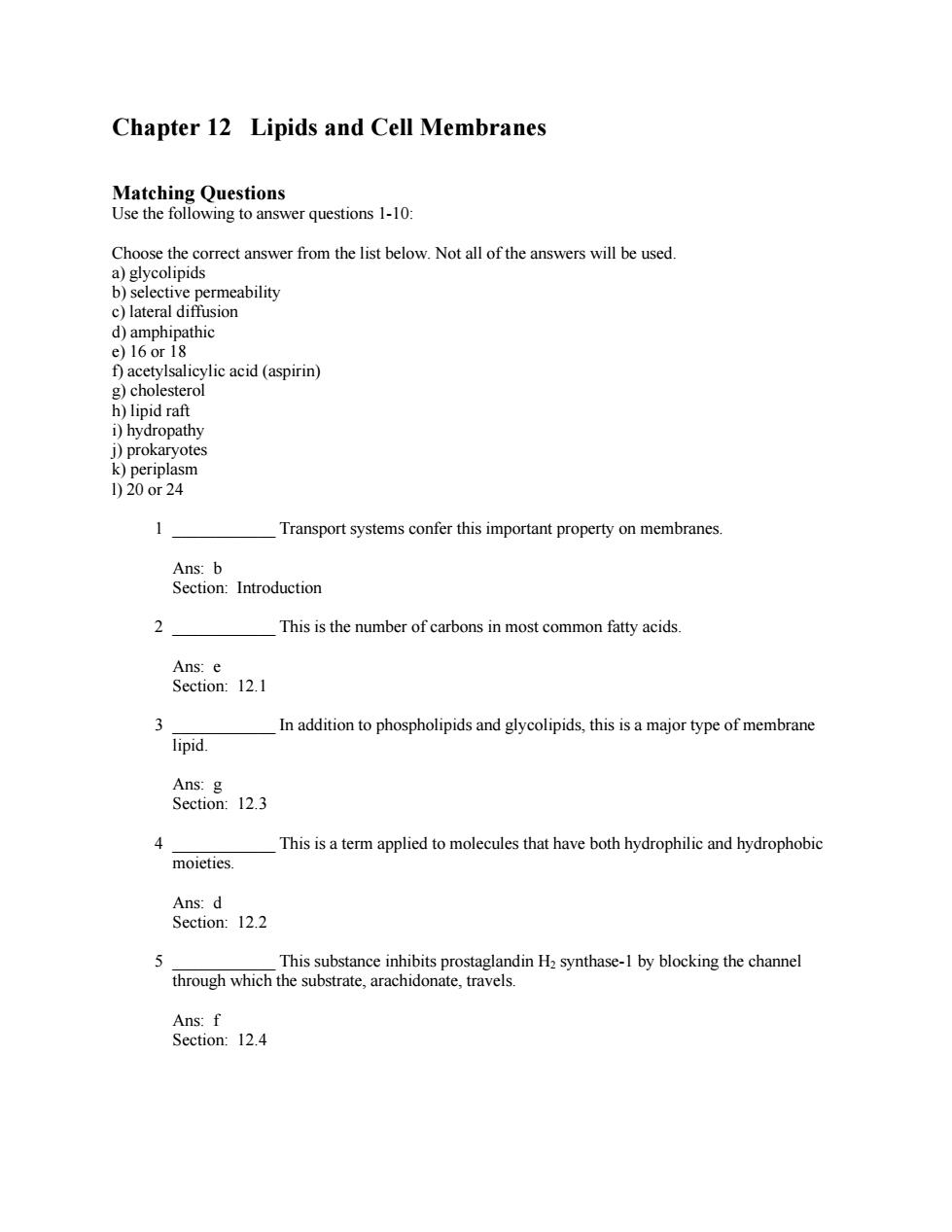正在加载图片...

Chapter 12 Lipids and Cell Membranes Matching Questions Use the following to answer questions 1-10: Choose the correct answer from the list below.Not all of the answers will be used. a)glycolipids b)selective permeability c)lateral diffusion d)amphipathic e)16or18 f)acetylsalicylic acid (aspirin) g)cholesterol h)lipid raft i)hydropathy 1)prokaryotes k)periplasm 1)20or24 Transport systems confer this important property on membranes. Ans:b Section:Introduction 2 This is the number of carbons in most common fatty acids. Ans:e Section:12.1 In addition to phospholipids and glycolipids,this is a major type of membrane lipid Ans:g Section:12.3 This is a term applied to molecules that have both hydrophilic and hydrophobic moieties Ans:d Section:12.2 This substance inhibits prostaglandin H2 synthase-1 by blocking the channel through which the substrate,arachidonate.travels. Ans:f Section:12.4Chapter 12 Lipids and Cell Membranes Matching Questions Use the following to answer questions 1-10: Choose the correct answer from the list below. Not all of the answers will be used. a) glycolipids b) selective permeability c) lateral diffusion d) amphipathic e) 16 or 18 f) acetylsalicylic acid (aspirin) g) cholesterol h) lipid raft i) hydropathy j) prokaryotes k) periplasm l) 20 or 24 1 ____________ Transport systems confer this important property on membranes. Ans: b Section: Introduction 2 ____________ This is the number of carbons in most common fatty acids. Ans: e Section: 12.1 3 ____________ In addition to phospholipids and glycolipids, this is a major type of membrane lipid. Ans: g Section: 12.3 4 ____________ This is a term applied to molecules that have both hydrophilic and hydrophobic moieties. Ans: d Section: 12.2 5 ____________ This substance inhibits prostaglandin H2 synthase-1 by blocking the channel through which the substrate, arachidonate, travels. Ans: f Section: 12.4